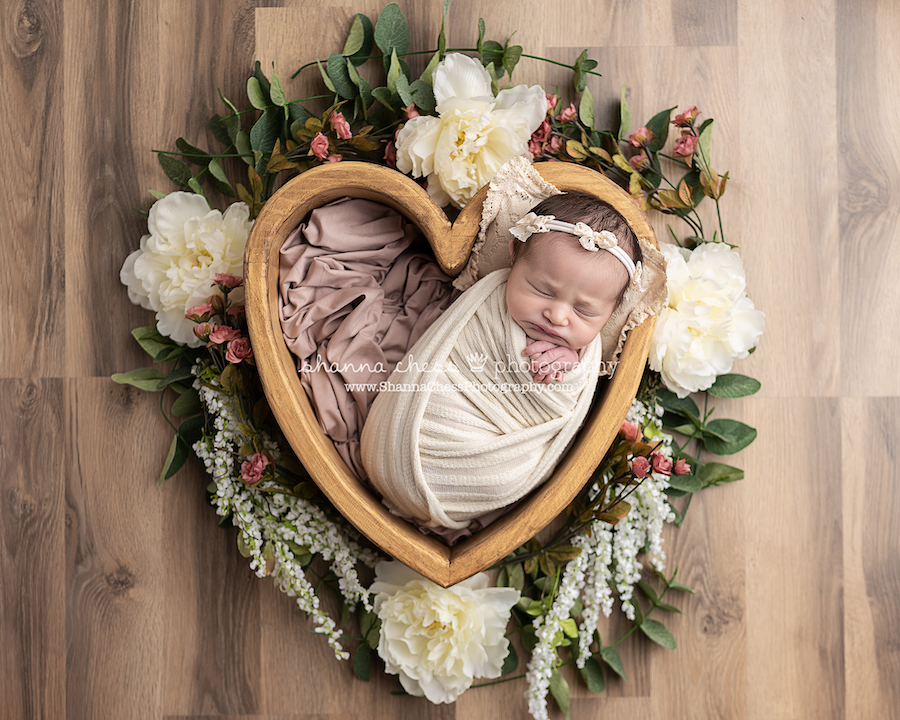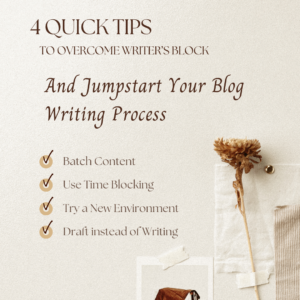In our last blog post we covered what to provide your ghostblogger to write pitch-perfect blog posts about your photo sessions. But as a photographer, you should be blogging about more than just the sessions you’ve done. Or rather, your ghostblogger should. But what on earth else can you blog about?
Plenty.
Today we’re going to talk about the informational photography blog post: what it is, how you can figure out your niche, and what to provide your ghostblogger so they can write those posts for you.
What Exactly Is an Informational Photography Blog Post?
Informational posts provide value to your clients by answering questions, giving tips and advice, and providing ideas and information. These types of blog posts also help you by establishing you as an expert in your field and creating a connection between you and potential clients. They’re great for SEO, since people are more likely to drop by your site if you have answers to questions they’re interested in. And informational posts can be a great source of keywords that you know potential clients are searching for, but that don’t lend themselves to optimization on your site’s main pages.
What to Blog About/How to Figure Out Your Niche
To keep your informational blog posts focused, it can be helpful to find a niche—something you know a lot about and that also overlaps nicely with your photography expertise. For example, if you’re a maternity and newborn photographer, maybe you’d like to provide advice for new parents. If you’re a family photographer and a mom yourself, you may be in a great position to provide tips on things to do with kids in your area, how to take better day-to-day photos of your family, or even ways to make meal prep and housekeeping easier. Maybe you’re a photographer who also happens to be wizard at digital organization. In that case you could focus on guiding people through the process of keeping their photos and digital info organized and accessible. As you brainstorm, think about your photography specialty as well as your personal life and interests. Chances are, there’s an intersect that will allow you to provide information your clients would find helpful.
A Little More Info
As you’re narrowing down your niche and figuring out what information you can provide your clients, keep in mind that the primary goal of an informational blog post is to provide answers to questions your clients are asking. It’s tempting to get sidetracked with SEO and keywords, but remember, a search engine’s main function is to help people find what they’re looking for. If your blog posts do that, better search engine results happen organically.
What to Provide Your GhostBlogger for an Informational Photography Blog Post
Of course, the whole point of outsourcing your blog is so you don’t have to bother with actually putting these posts together. Instead, you’ll give your ghostblogger some pointers and let them take care of the rest. Here’s what I recommend providing your ghostblogger so they can write great informational photography blog posts for your site:
Topic
First things first. The rock-bottom minimum your ghostblogger is going to need from you is a topic. This should be something you’ve already researched and feel will be a good fit for your blog. It should also be as specific as possible. Rather than, “I’d like a post about how to take great maternity pictures,” zero in on what you really want. “I’d like a post about practical things every woman can do to look and feel great on the day of her maternity pictures,” or “I’d like to do a post outlining some of the best poses for diy at-home maternity pictures.”
Word Count/Budget
Obviously it’s important to work this out with any blog post. However, since informational blog posts are going to be longer than blog posts documenting your photography sessions, it’s very important that you and your blogger are both on the same page as far as word count and budget. That way your ghostwriter knows upfront how much room they have to work with, and you don’t get surprised by the total on your invoice.
Why are informational blog posts longer than session posts? If you’ve chatted with your blogger about doing informational posts, they’ve probably recommended a much higher word count than you’re used to with session posts. I generally recommend around 300 words for blogging a photography session, but I bump that up to a thousand word minimum for informational posts—and if you can swing it, let’s shoot for double that.
The reason for this goes back to our golden rule of informational blogging: it has to be helpful for the client. Practically speaking, a longer post that goes in-depth and addresses all the details is going to be a better guide for people than a short post that has to leave out a lot of info and squeeze everything into a few bullet points. And search engines know that too. Recent research has shown that longer blog posts tend to get more views and shares. So, while word count isn’t everything, you’ll definitely want to take it into consideration and find an appropriate balance between SEO and budget.
Keywords
If you have specific keywords you want to use, make sure you give those to your ghostblogger before they start writing your post. Editing a couple of sentences is no big deal, but rewriting an entire article for a different keyword is no walk in the park, and your blogger may even charge a rewrite fee for it.
Resources
Maybe you have a downloadable guide that contains a lot of the info you want your ghostblogger to include in this post. Or maybe you’ve come across other articles that make some points you’d like to address too. Feel free to send those resources to your ghostblogger to help them create a blog post that covers everything you want.
Links
Links in your blog posts are always a good idea—you don’t want those sad orphan pages that don’t connect to anywhere else on your site. Informational blog posts may also provide an opportunity for outbound links (links to sites other than your own.) For example, if you’re an affiliate providing information about a photography product or app, you’ll want to give your ghostblogger the specific link that will ensure that if someone navigates to the website where that product or app is being sold, you’ll get credit for sending them there.
Bullet points or outline
Chances are, your ghostblogger isn’t an expert on camera lenses, vacation destinations for young families, postpartum depression, or whatever it is your informational blog post is about. And even if they were, there are many directions they could go with those topics. (Back to specificity). So give them some guidance on exactly what you want included in your post. This can take the form of bullet points, an outline, or even a rough draft.
I have one client who dictates her blog posts about digital photo organization with an AI transcription tool—just kind of putting her thoughts on paper—and then sends it to me to organize and edit into an accessible and engaging blog post. This makes it quick and easy for her and quick and easy for me. (So much so, in fact, that I charge a lower editing fee for doing those posts, rather than the writing fee I would charge if I had to create those blog posts from scratch.) Do some experimenting and work with your ghostblogger to find a method that does the trick for both of you.
Photos
Just like with a photography session blog post, I ask my clients to make sure I have access to any photos they want included in their informational photography blog post. While I’m not relying as much on the photos for guidance as I would for a session post, having the photos means that I can get the entire blog post ready (alt text and all) in one go and don’t have to chase clients up for images.
What Does This Look Like in Real Life?
Every ghostblogger will have different requirements. Personally, my goal is to support my photography clients in their role as small business owners and make blogging as hassle-free as possible. To that end, I keep my workflow flexible. If something works for my clients I try to make it work for me too. Generally, something like this is great: (*Note, although I’ve included links to client blog posts, the examples given for blog post requests are entirely fictional.)
“Hey! I’d like 1000 words on things women can do to prep for their maternity session. Points to cover: Drink lots of water the day of and a couple days before. Get your nails and hair done (mention that hair and makeup is provided at the studio for an additional fee). Don’t worry about posing: I’ll guide them through this so they look amazing! Choose flattering outfits (link to this previous post about outfit ideas for maternity photos). Mention that I also have gowns at the studio they can use (link to this post.) Think about what kind of style/shots they want so they’re prepared (casual or glam, nude shots, including partner, etc.) Emphasize that I make this a relaxing, spa-type experience, so I want them to look forward to it and enjoy the experience.”
This is going to help me write a post that’s on point and covers what my client wants. More details (including keywords) would be even better, but this is definitely enough to work with. She’s given me a topic so I know what to search for if I need more material, points to cover so I know exactly what she wants, links (and I’d probably include a link to her portfolio too under the section about thinking about what kind of style/shots they want), and a decent word count.
Contrast this with something like:
“Can you do the next blog post on getting ready for your maternity session? Just the usual length.”
She’s given me a topic…kind of. Without any points to cover, it’s pretty vague. There are a couple of different directions I could go, and I don’t know for sure if I’ll cover what she has in mind. No links or resources, which means I’ll have to scrounge what I can from her website and then use other people’s information for very general tips that will apply to everybody. And I happen to know that “the usual length” is 300 words—not great for an informational blog post.
Can I still write this blog post for her? Absolutely. And of course, I’ll do my best to write a post that’s as engaging and informative as possible within those limited parameters. But my other client is going to get better results simply because she provided me with better material and has a better understanding of appropriate word count.
In Conclusion
Informational blog posts can be hugely helpful for SEO and client relationships. This is especially true when you keep the golden rule of informational blogging in mind (make sure it’s helpful to the reader), stay focused on your niche, and give your ghostblogger the resources they need to do their best work for you. Even if you decide that you want the majority of your blog posts to be session-oriented, I highly recommend mixing things up with informational posts on a regular basis. Trust me, you’ll be glad you did. And now that you know exactly what to provide your ghostblogger so they can take those posts off your plate, it should be super easy!
Bonus: Ideas for Informational Blog Posts for Photographers
I know it can be tough to come up with ideas, so here are just a few to help get the juices flowing as you brainstorm. Feel free to share your own ideas in the comments!
If you want to keep it general:
What to Wear to Your Photography Session
Tips for Posing Extended Family Portraits
New Moms: Here’s How to Make the Most of Nesting
How to Establish a Bedtime Routine for Your Baby
Nursery Décor Ideas
Best Ages for Professional Pictures of Your Children
Where to Get Your Photos Printed
If you want to make it more specific to you and your business
From Consultation to Canvas: What to Expect from a Newborn Photography Session with Us
Check out Our New Studio Space!
5 Things I Love About Being a Maternity Photographer
Our Artwork from A to W (Albums to Wall Art, of course!)
What Makes Our Senior Photo Sessions Unique
Peek Into Our Client Closet
Reflections on my Journey as a Portrait Photographer
And don’t forget to check out these 14 blog post ideas for portrait photographers!




Itís difficult to find experienced people for this topic, however, you sound like you know what youíre talking about! Thanks
Good day! I just would like to give you a huge thumbs up for your great info youve got right here on this post. I will be coming back to your website for more soon.